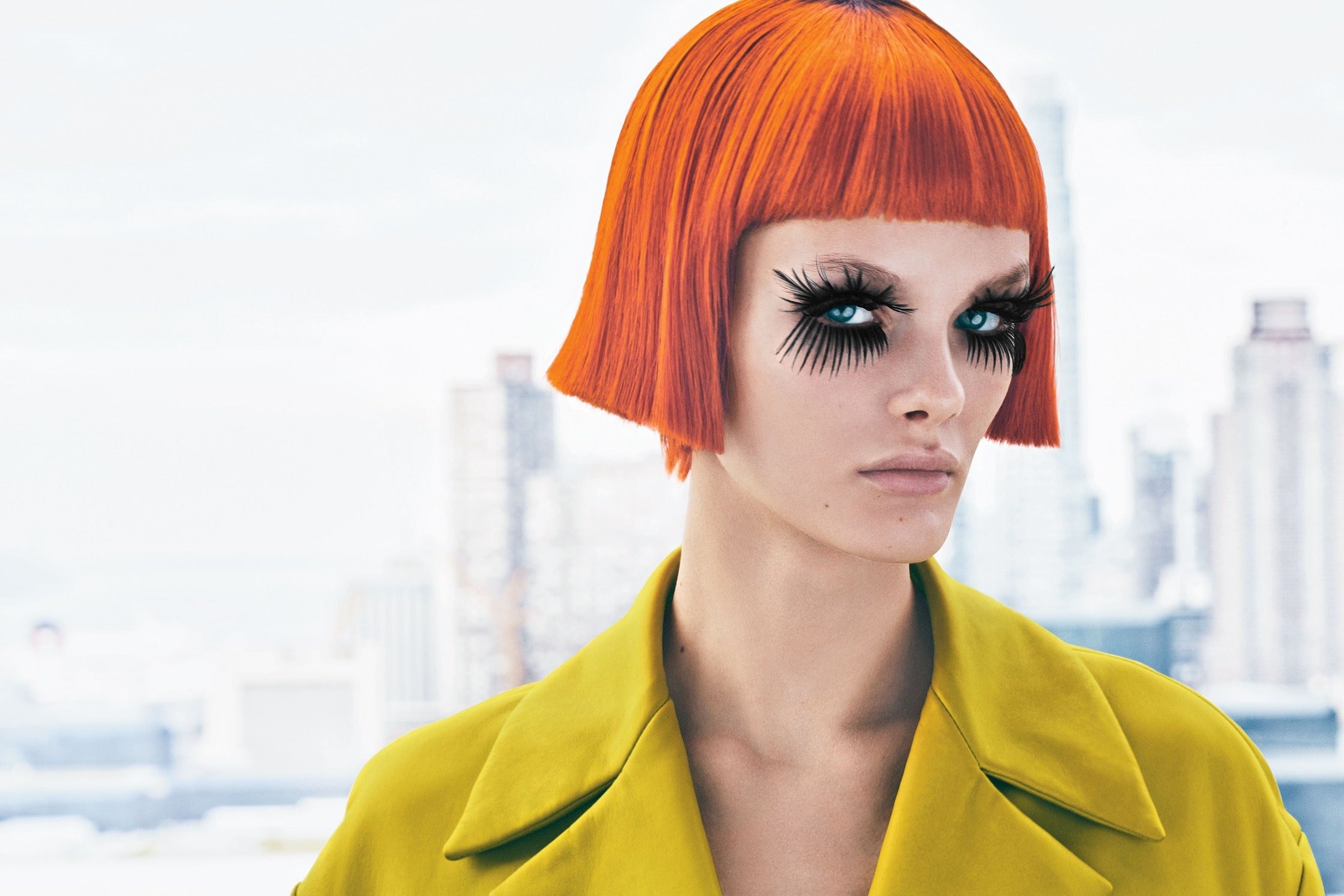All Eyes on You
Once a trashy beauty item for drag queens, performers, and people deemed to be wearing ‘too much makeup,’ false eyelashes, from strips to extensions, have found their way into our daily beauty routines. But just how did we start gluing fake hair onto our eyes in the first place? Because when you think about it like that, it is a pretty fascinating practice!
Where the Trend Began
Photographed by Steven Klein, Vogue, December 2018
By all reports, the idea of big, luscious eyelashes being a beauty aspiration is ancient. As far back as 3500 BC, men and women in Ancient Egypt were using brushes and ointments to darken and extend their lashes, although at this time there was a practical need to help keep the harsh sun out of their eyes. Romans followed the trend, attempting to lengthen eyelashes with burnt coal. Interestingly, for this period, the ‘beauty standards’ were closely linked to symbolizing good traits, and in this case, longer, darker lashes were supposed to be a symbol of morality and virginity. The trend had a very weird, and very dangerous twist in the Middle Ages when women actually plucked their eyelashes out. The aesthetic reasons for this were multiple: for one, having too much hair visible was seen as erotic, which was, of course, just absolutely awful, but it was also the preferred ‘look’ to have larger foreheads with hair hidden under a hat, so women also plucked their hairlines back to achieve this smooth and hairless look. Ouch! The journey towards fake eyelashes gets even more gruesome through the 19th century, while our lord and savior Eugene Rimmel invented mascara in the mid-1800s (yes, Rimmel as in Rimmel London!), there were some totally unnecessary other attempts going on to find ways to extend the lashes. We’re talking about reports of women sewing hairs onto their eyelids and getting eyelashes implanted with needles!
Introducing Artificial Lashes
Finally, artificial lashes were patented; this was in 1911 by Canadian inventor Anna Taylor. But they didn’t quite take off as a wearable style yet. First, New York picked up on false eyelashes as an unusual interlude, thanks to German hairdresser, Karl Nessler, who provided them as protection against the glare from lights. False lashes finally hit the big screen and found their place in popular culture. This finally happened in 1916 when director D.W. Griffith, while filming "Intolerance," decided that his main actress, Seena Owen, needed her eyes to stand out even more, and the production's wig maker set to work crafting her a pair of false eyelashes from human hair and gauze. Thus, the trend was born and throughout the 1920s and '30s, the bigger the lashes, the better. As with all good trends, male reporters didn’t like this one too much. Men looked down on the trend and the women wearing it as ‘temptresses’ (sound familiar?), but that didn’t stop the starlets of the day from wearing false lashes in fervor.
Modern Lashes
By the 1950s, the trend had reached the mainstream; it was no longer just the stars of the screen such as Marilyn Monroe and Judy Garland who wore their falsies, and strip lashes began to be produced in plastic instead of hair. Dramatic eyes were in vogue up until the '70s; their popularity dwindled over the '70s and '80s but came back in full swing when we reached the rave-loving '90s. Semi-permanent lash extensions were developed in the late 1990s and 2000s, with Korea being a particularly early adopter, and were introduced in the US in 2004. With the backing of the hottest celebrities of the era (Paris Hilton & Kim K to name a few), this trend took off too.
Today we have it all; individual lash extensions, cluster lashes to apply individually at home, strip lashes to put on for a night out, and even magnetic options to save all the faff with eyelash glue. It’s safe to say that this ancient trend isn’t going anywhere!



